Pearl of The Caribbean – PART 6.
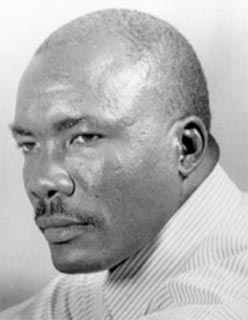
BESIDES issues of sovereignty and the selling or giving away of our patrimony with nothing to show, there are several other reasons to be cautious and apprehensive about the DSH development and the Prime Minister’s approach. According to the agreement the government has only one year to decommission the garbage dump and to establish another one at a suitable distance away from the development. So far the place that has been bandied around as an alternative site is an abandoned pumice mine in the La Retraite / Grace area; but this site is next to the Vieux Fort River, a major source of potable water for Vieux Fort, and which may well be the source of water for the DSH development. If the leakage from the current garbage dump, which is a good distance from the Mankótè Mangrove, is being blamed for the deterioration of the mangrove, imagine the negative impact the garbage dump at the pumice site would have on Vieux Fort’s water supply.
When such large projects fail, they often leave a disaster in their wake. Take for example, Le Paradis, the resort at Praslin, Micoud, inclusive of a golf course and a marina, that has left a sore on the landscape, essentially devaluing the real estate, and precluding other developments for the area. Furthermore, given the small size of the country, concentrating such a large development in the hands of a single entity, brings up issues of controlling the political process, circumventing the will of government, excessive influence on the economy. Manifestations of DSH’s undue influence is already apparent. The government is now changing its CIP regulations and modifying its policies to conform with DSH wishes,
Even if the DSH project was devoid of issues of sovereignty, patrimony, and loss of recreation space, as the construction of the George Odlum stadium demonstrates, the amount of employment Chinese developments generate and the fairness of the wages they pay are always questionable because of the tendency to import Chinese workers and pay them non-competitive wages. So in terms of employment, it is unclear how much the DSH project would benefit the country.
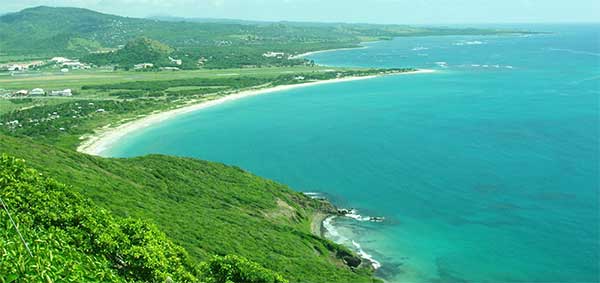
The case of Baha Mar, a US$3.5 billion mega resort in the Bahamas, six years in the making, that boasts four luxury hotels, the largest casino in the Caribbean, a championship golf course, and a 200,000-square-foot convention center, is instructive of the need to be circumspect about both large development projects, and Chinese developers. The resort was largely financed by the Export-Import Bank of China with the stipulation that China State Construction serve as the builder and cannot be fired and workers from China must do the work. However, as the project progressed and started falling behind schedule, significant numbers of Bahamian and American contractors were employed. When in operation the Baha Mar was supposed to account for 12% of the Bahamas GDP. So enthusiastic was the prime minister about the resort that he gave up his residence to make way for the development. For a number of cited reasons, including inadequate financing, mismanagement, faulty construction, overly ambitious, the project kept missing its deadlines until, though 97% complete, the developer filed for bankruptcy in the Summer of 2015, causing Standard & Poor to lower the Bahamas’ credit rating to one level above junk status, and the IMF to lower its growth forecast. It is reported that Baha Mar has found a new buyer, which should be good news for the Bahamian contractors whom the resort owes an estimated US$74 million. According to China Horse Club’s website, China State Construction, Baha Mar’s builder, will play a lead role in the establishment of the Pearl of the Caribbean.
In response to protest over interference with the Mankótè Mangrove, the developer modified its plans to avoid the nature habitat, and instead brought his gaze upon Pointe Sable Beach as the site for his villas and luxury hotels. However, the protest over his use of Pointe Sable Beach is likely to dwarf that over the mangrove forest. Some Vieux Fortians and many St. Lucians may be only vaguely aware of Vieux Fort’s stand of mangrove forest, and even less aware of the important environmental role of the habitat. But the same can’t be said of Pointe Sable Beach, for the visage presented by the Maria Islets, the Moule-a-Chique headland and Pointe Sable Beach is arguably Vieux Fort’s most alluring and visible landmark. It is impossible to enter Vieux Fort along its 4-lane, American-built highway and not feast eyes on this scenery, and don’t feel compelled to take a swim. One would be hard pressed to meet a Vieux Fortian who hasn’t set food on Pointe Sable Beach. The sea grapes, fat poke, sea almond and coconut palms that clothe the beach lend to it a cosiness and privacy that enhances its allure. Pointe Sable Beach is one of the most popular beaches on the island. On weekends it is crowded with recreationers from all over the island and beyond. It has become so crowded that people now camp under the vegetation across the highway from the beach, and some have totally moved away from the Atlantic side and now use the smaller and less appealing beach on the Caribbean side near the Vieux Fort River delta.
But why would Vieux Fortians protest so vehemently against hotels going up on Pointe Sable Beach, especially when by law the Queen’s Chain will always belong to them? Well, all St. Lucians know that once a hotel fronts a beach, locals shy away from the area, so for all practical purposes, Queen’s Chain or no Queen’s Chain, that stretch of beach is effectively lost to local use. And the hotels do not help; they usually line up their stretchers on the beach, they are not too friendly to recreationers who have to pass through their property to get to the beach, their gates and checkpoints alone signalling the unwelcome message. Coconut Bay at the northern end of Pointe Sable Beach is a good example. Despite the fact that the lower part of the beach has gotten very crowded, one would be hard pressed to find a single recreationer (other than guests) along the piece of the beach fronted by the hotel.
Vieux Fortians and St. Lucians know for sure that once Pearl of the Caribbean takes over the beach, its use will be lost to them, thereby continuing the trend that the best of what the island has to offer are enjoyed not by its citizens but by visitors or foreigners. It’s as if the best of St. Lucia is too good for its citizens. And to make matters worse, DSH will acquire every inch of beach stretching from Coconut Bay to the foot of Moule-a-Chique. The good Book says man shall not live by bread alone, which also means that man needs bread to live. So everyone understands that development requires compromise, you have to give up something, but what good is development if you have to give up everything. It makes sense then that no matter what, a stretch of Pointe Sable Beach remains public and unencumbered for the enjoyment of St. Lucians.
Last year it came as an alarming surprise to many Vieux Fortians that Invest St. Lucia was considering replacing Pointe Sable Recreation Park in the Filao area with a shopping mall, when, for over a decade now, several Vieux Fort community groups, including the Southern Tourism Development Corporation and Vyé-Fo Mouvman Ansanm, have been advocating for officially designating the space as a recreation park, and transference of the land to perhaps the Vieux-Fort South Constituency Council to hold in trust for use as a community park in perpetuity. The groups saw this as an urgent matter, because the Filao area is one of the few, if not only area suited for a community recreation park in the vicinity of Vieux Fort town. As was expected Vieux Fort residents concerned about the disappearance of their green space put up stiff opposition; the mall was not pursued. Now those concerned Vieux Fortians have an even bigger fight on their hands because the Fialo area is included in the 92 acres of beach front land to be ceded to DSH. One can well imagine Vieux Fortains right now asking in frustration what must they do for the government and Invest St. Lucia to get it, that people need green space, recreation parks, places to exercise, socialize, rejuvenate; and that once green space disappears, it is forever. Should they be reminded yet again that man shall not live by bread alone.
LOVE AFFAIR
It would appear that the UWP has a love affair with the Chinese. The previous administration just about turned the prime ministership to Tom Chou, and now apparently Chastanet wants to hand over the nation’s sovereignty and patrimony to Teo Ah Khing.
Now, if the devil is in the details, then the demons are between the lines. Not only does the developer want land for cheap for his development, he wants adjacent lands set aside for him for future developments, and he wants the lands in and around the stadium, land he will not pay for, to be part and parcel of the project so that any future education institutions destined for the area will be housed within his project. Yet Allen Chastanet has never mentioned off-shore schools or educational complexes as part of his vision; this is a Kenny Anthony vision, not a Chastanet vision; Miami Beach, yes, but not University complexes. And prior to coming to St. Lucia the developer has never been engaged or expressed an interest in educational developments. And what does a horse racing enterprise have to do with education complexes?
Reading between the lines, one is forced to conclude that the developer’s unstated goal is to ensure he creates an enclave separate from the population so as to control and restrict access to his masterpiece, ensuring that locals don’t disturb, shake up in any way the millionaires and billionaires for whom Pearl of the Caribbean will serve as a playground. The extra land that he is asking to be set aside, but for which he will pay nothing, is probably to serve as a buffer zone to safeguard against any other development coming close to his creation, that no other development compete with his, no other development feeds off his enterprise. So whatever local businesses that may be contemplating setting up shop next to the development to capitalize on spinoffs may be in for a surprise. Reading between the lines, live and let live is not part of Teo Ah Khing’s vocabulary.
GEOPOLITICAL
A historian has pointed out that the DSH project may not be about just St. Lucia, or Vieux Fort, or Chastanet, or Teo Ah Khing, but may have serious geopolitical ramifications. For with a large expanse of flat land that can accommodate large infrastructural installations, an ocean going seaport, an international airport, an extensive coastline (Vieux Fort is three-quarters surrounded by water), and the viewing points afforded by Moule-a-Chique and Morne Le Blanc, Vieux Fort is of great strategic importance. So much so that it was here that the Americans established their military base during World War II, and their radar facilities at Moule-a-Chique at the beginning of the Cold War, and then returned to Moule-a-Chique during their 1983 invasion of Grenada. So the question the historian posed was: what would be America’s take on a national of a non-too-friendly (or at the very least a non-ally) country owning so much of these strategic lands? This may be cause for concern—especially when it is juxtaposed against the notion that, given the IMPACS controversy (of which the police shootings that gave rise to it occurred during the previous UWP administration), the CARICOM CIP programmes which a CNN report intimated are causing a US security risk, and the prime minister blaming the country’s escalating crime rate on US deportation policy—because America may be keeping a close eye on St. Lucia and the UWP. Some may respond that St. Lucia is an independent, sovereign country, so why be bothered with the US? But then again isn’t it the same sovereignty and independence that the government is about to sell cheaply to a developer. If so, why should America be mindful of St. Lucia’s sovereignty? In other words, the DSH agreements if acted upon will devalue St. Lucia as a country.



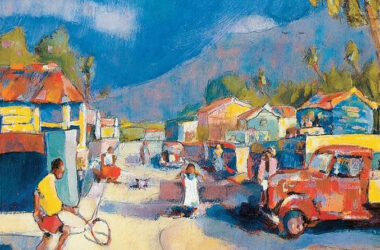

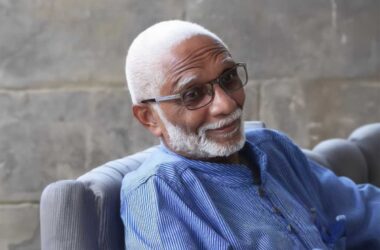
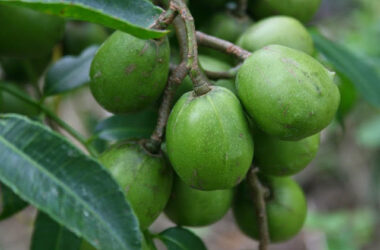
….there are some two-legged horses who feel dismayed because,…..their sexual arcades will be gone!
Yes SAMJ, why not take a thought-provoking and in someways chilling discussion straight to the gutter. Fortunately those who value intellectual and informed debate will treat your comment with the same disdain that it has displayed.